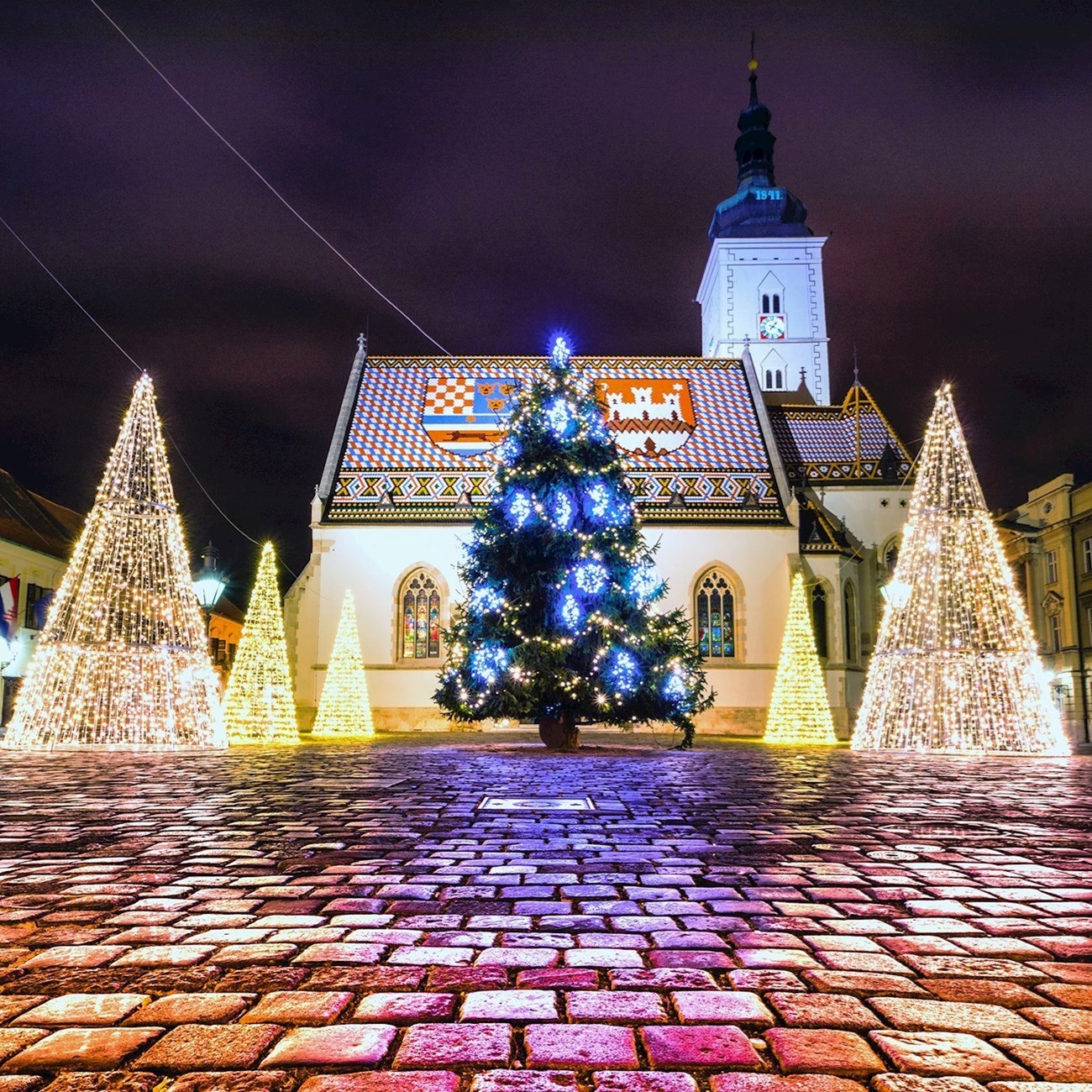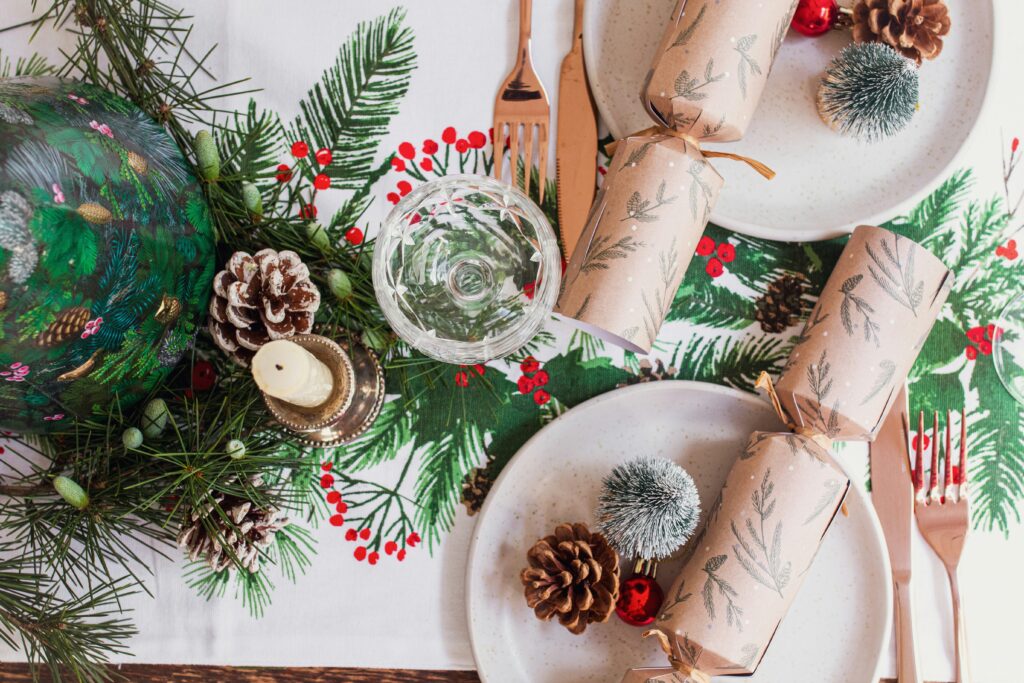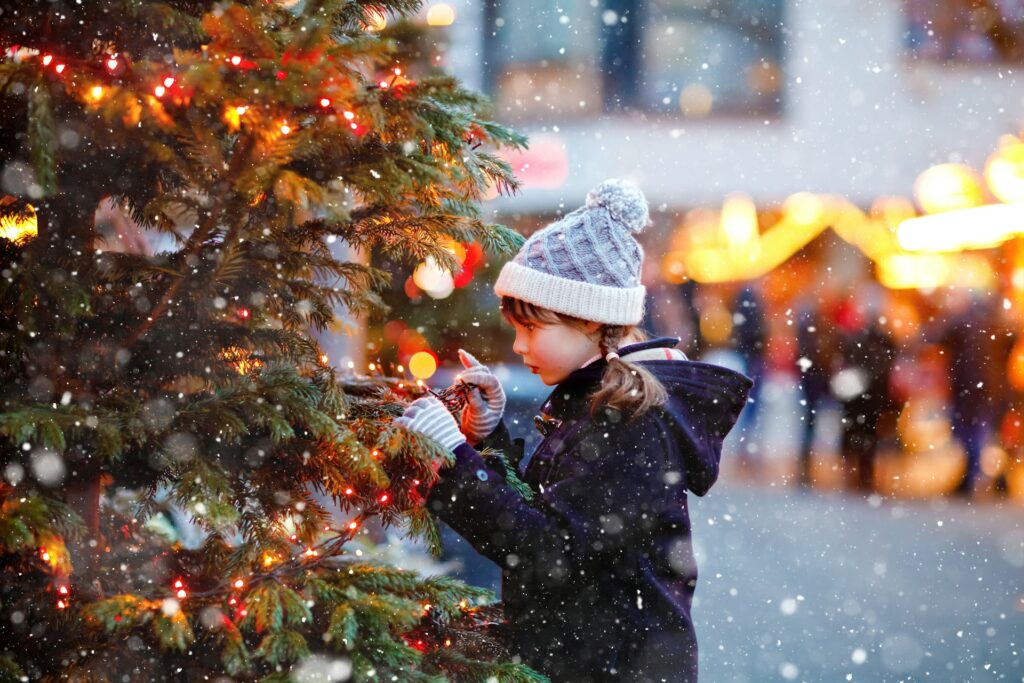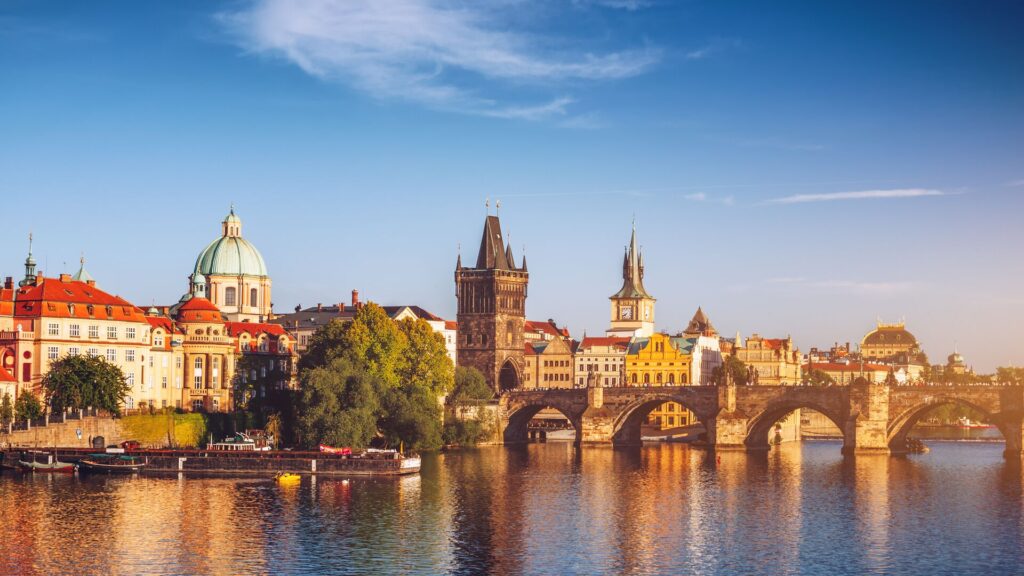Climbing to the Top: The Insight Guide to the Most Scenic Alpine Towns
15 Best Things To Do In Slovenia This Year
Surrounded by Italy, Austria, Hungary, and Croatia, Slovenia is one of the few European countries that still feels like a “secret” destination. With a sliver of the Adriatic Sea and a sizable section of its topography devoted to mountain ranges, this Central European country spoils visitors with outdoor adventure that’s just as accessible as its museums, old towns, and resorts. The best things to do in Slovenia range typically focus on exploring sites like charming Lake Bled and the spectacular Škocjan Caves, though other attractions in Slovenia like Franja Partisan Hospital and Gewerkenegg Castle offer an immersive way to learn about the country’s unique history that sets it apart from its neighbors.
What is Slovenia famous for?
Even if a traveler has never visited Slovenia, they’re likely familiar with the enchanting church floating in the center of Lake Bled. From lakes and mountain peaks to caves and gorges, Slovenia is famous for its generous landscape. Outdoor enthusiasts will enjoy hiking, white water rafting and paragliding through the country. Those who merely enjoy a bit of scenery on their city break are still spoiled by the serene sights around Ljubljana, Bled and Maribor.
15 reasons to visit Slovenia
There are so many ways to apprecaite Slovenia. This country, while relatively small, has thousands of years of history, geology and culture to explore. Taking a Slovenia guided tour is a great way to explore the country’s limestone caves, medieval squares and equestrian pedigree. Here are 15 reasons why visiting Slovenia is a must for backpackers, culture vultures, and foodies alike.
1. Explore Ljubljana, an overlooked European capital
One-tenth the population of Paris and one-sixth the size of London, Ljubljana is one of the smallest capital cities in Europe. Despite being a relatively short train ride away from Venice, Graz, and Zagreb, Ljubljana is often overlooked. For curious travelers, that means fewer queues, generally lower prices, and a more relaxed experience without sacrificing culture, art, cuisine, or access to the outdoors.
What can I see and do in Ljubljana, Slovenia?
Though some of the major tourist attractions in Slovenia are outside of city limits, Ljubljana has plenty to see and do. Ljubljana Central Market has both an open-air and indoor covered market where you’ll find chefs cooking traditional Slovenian food every Friday between March and October.
A statue of France Prešeren stands tall in Prešeren Square, just across from the Triple Bridge that crosses Ljubljanica River. The baroque Saint Nicholas’s Church, the medieval Ljubljana Castle accessible by funicular, and massive Tivoli Park will easily fill your city break schedule.
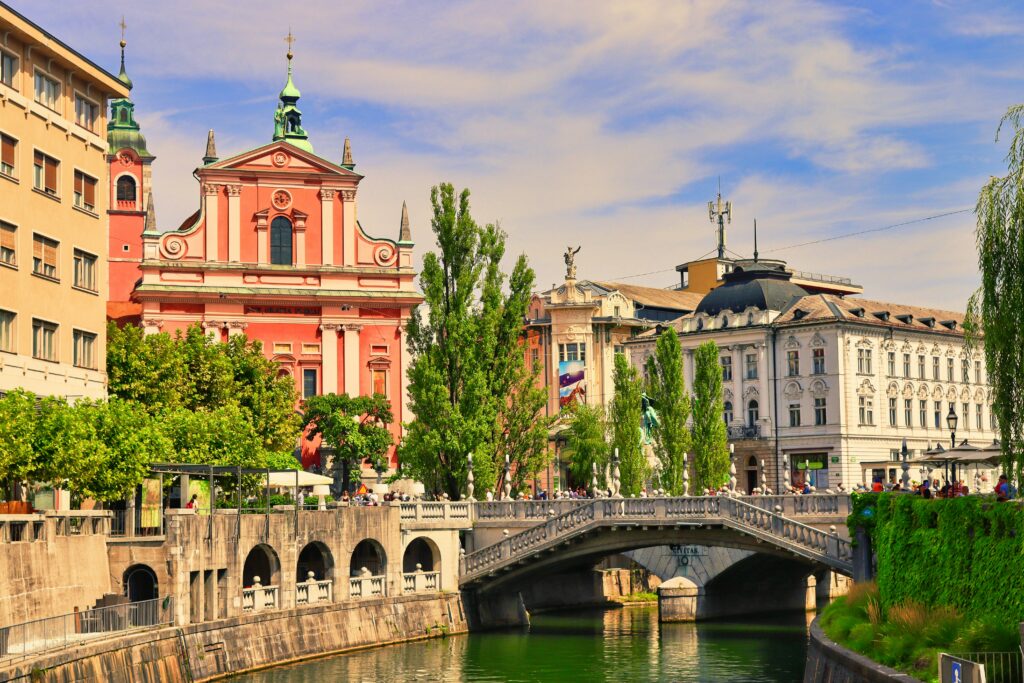
2. Sit serenely on the shores of Lake Bled
Most travelers make a beeline to Lake Bled after touring Ljubljana. An island church sits in the middle of the lake, framed by the cool blue water and peaks of the Julian Alps. You can row a boat alone or take a group pletna ride to the island where visitors are told ringing the church’s bell will grant their wish. One of the best views of the lake is from Bled Castle, though the sights from atop a paddleboard or behind a slice of Bled cream cake are equally memorable.
Where is Lake Bled in Slovenia?
Lake Bled is located in northwestern Slovenia, only a few miles from the Austrian border. It’s a quick day trip from Ljubljana, taking less than an hour by car and less than two hours by train. Take an optional tour of Lake Bled on our two-week Splendid Europe tour.
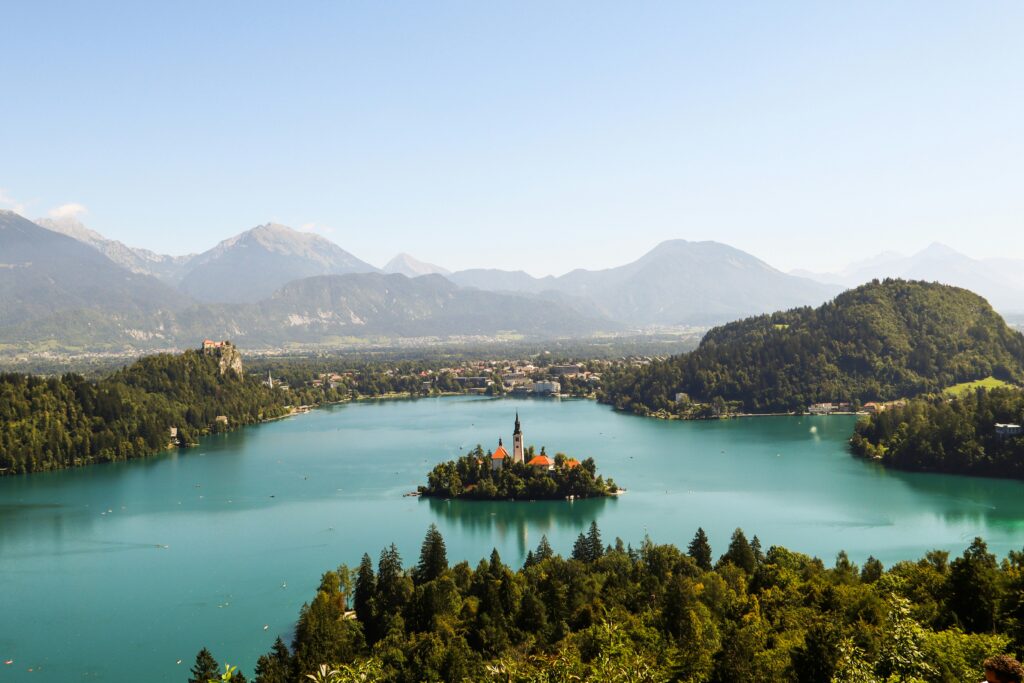
3. Uncover the history of a “hidden hospital”
The Franja Partisan Hospital played an important role in World War II. This cluster of facilities created a clandestine hospital complex hidden in Pasica gorge. From 1943 to 1945, the wounded were blindfolded and brought under the cover of darkness — wounded from both sides of the war. Only 61 patients died at this hidden hospital while over 1,000 were helped or healed. The Franja Partisan Hospital is called a monument to humanity, received the European Heritage Label, and is now an active museum featuring guided tours.
4. Photograph the oldest vine in the world in Maribor
Though Slovenian wine may not be as famous as its Italian neighbors, the country lays claim to the oldest vine in the world. It was planted during the Middle Ages in Maribor, Slovenia’s second-largest city, and still bears grapes today. The vine has survived everything from fires to bombings during World War II. You can view it, still growing today, at Maribor’s museum which also accommodates wine tastings and winery tours. Visit Maribor on our epic 26-day European Grandeur tour beginning in Paris and stretching through 11 countries to end in Amsterdam.
5. See the caves of Slovenia
In a country where Lake Bled, the Julian Alps, and Triglav National Park inspire wonder, many travelers are surprised to discover that Slovenia’s caves are arguably its most astounding natural features. Rarely will you find a “normal” cave in Slovenia; many of these subterranean dwellings are home to endemic species like the aquatic salamander. These olms, found in Postojna Cave Park, were once thought to be baby dragons. Along with the Škocjan Caves, which is one of Slovenia’s UNESCO World Heritage Sites, Postojna Cave is one of the most popular natural tourist attractions.
The caves of Slovenia are so ecologically diverse that each visit is unique. Predjama Castle is a special destination in its own right. The largest cave castle in the world, Predjama Castle is nearly a millennia old. Situated on a cliffside 123m high, this castle sits above the second-longest Slovenian cave. Postojna Cave is open year-round and home to bats, olms, and dazzling stalagmites shining with flowstone deposits.
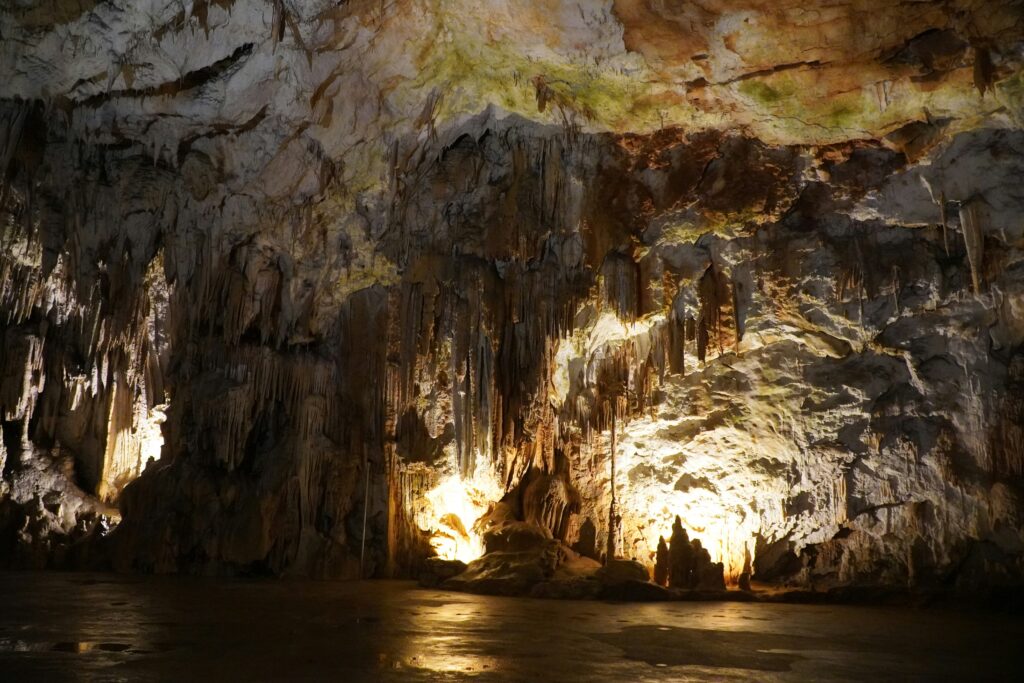
6. Wander on foot or cycle through Triglav National Park
Visiting Triglav National Park is one of the best things to do in Slovenia, no matter if you’re a nature lover or a firm city-break traveler. Located only an hour outside of Ljubljana, you can spend your full vacation roaming Triglav National Park and still not have enough time to explore everything.
The Soča Trail, running along the Soča River is a lovely though long 25km trail with footbridges spanning the riversides. The Peričnik Waterfall trail is circular, offering a short 4km walk between the Slovenian Alpine Museum and Koča pri Peričniku. Whether you’re walking your canine companion around Lake Bohinj or taking a cycling tour to Savica Waterfall, Triglav National Park will leave you breathless in more ways than one.
If you’re digging deeper for a more unique experience in Slovenia, consider foraging for mushrooms and herbs in Triglav National Park. In the third protection zone, visitors are allowed to collect up to 1kg of herbs per person and up to 2kg of mushrooms per person.
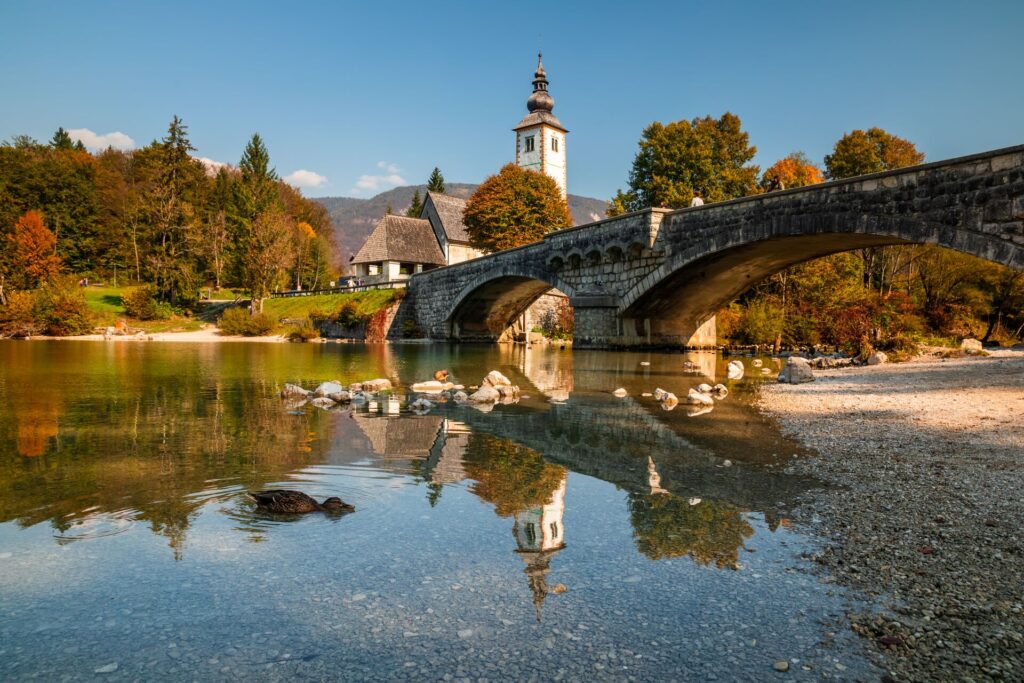
7. Stay longer at Triglav’s Vogel Ski Resort
It’s impossible to talk about Triglav National Park without noting it as a prime place to ski in Slovenia. Plan a getaway to Vogel Ski Resort during the winter and you’ll have your fill of skiing or snowboarding 22km of slopes at one of Slovenia’s largest ski resorts.
During the sunny seasons, you can swap your snowshoes for hiking boots in this fairy-tale-like alpine resort. The high altitude hiking archaeological trail has a dozen educational boards discussing the history of the landscape from over 5,000 years ago. You can also take a cable car to Vogel Viewpoint, paraglide in the summer, and play the 9-hole DiskGolfPark course.
8. Take a day trip to the beach
Slovenia is almost entirely landlocked but it still has a short strip of coastline for beach breaks. Just under 47km in length, Slovenia’s small section of the Adriatic Sea separates the Italian and Croatian borders. Find an old town square with Venetian influence in Koper or watch the boats sail by from the shores of Izola’s Svetilnik Beach.
Piran is undoubtedly the go-to spot for those looking to relax by the seaside. This resort city has orange-colored roofs reminiscent of Dubrovnik and Venetian architecture designed when the istria was under the Republic of Venice. Picturesque on the peninsula, Piran has an aquarium, the Museum of Underwater Activities, and the 7th century Walls of Piran that offer a leisurely mix of sightseeing during a beach day.
9. Admire Slovenia’s gorgeous geology
Slovenia’s small size is misleading when it comes to the country’s diverse topography. Among its geology, you’ll find multiple gorges, including the two most popular: Tolmin Gorge and Vintgar Gorge. Tolmin Gorge, located on the southern side of Triglav National Park, is an ideal swimming hole in the summertime. Vintgar Gorge, also on the edge of Triglav National Park, features a one-way trail with an audio guide.
Lesser-visited yet still spectacular geological sites in Slovenia include The Risnik collapsed doline near Divača, which has a trail circling the sinkhole, and the Mali Naravni Most natural bridge in Rakov Skocjan Regional Park.
10. Celebrate the holidays in Slovenia
Nearly every month has a Slovenian national holiday, which gives you multiple chances to experience the country’s culture alongside locals. Notable holidays include February’s Prešeren Day, which is a day of remembrance for the Slovene national poet France Prešeren, and September’s Slovenian Sports Day, which celebrates the country’s affinity for sports.
Check the calendar when planning your trip and do your research to make sure that the tourist attractions in Slovenia you wish to visit are open during national holidays or other work-free days.
Get lost in the whimsy of the holiday season on our 8-day Christmas Markets of Croatia, Slovenia and Austria tour which includes visits to unforgettable European Christmas markets in Varaždin, Ljubljana, and Bratislava.
Save up to $3,000* per couple on your first Premium Tour
Plus receive latest offers, travel inspiration, and discover how your travels will make a positive impact. Together, WE MAKE TRAVEL MATTER®. Subscribe Now11. Learn about a castle with no royal heritage
Among Slovenia’s 500 castles, Gewerkenegg Castle stands out not for its aesthetic, but for its unique history. Unlike every other royal fortress in the country, Gewerkenegg Castle has no ties to the aristocracy. Built originally as a chapel by German miners in the late-1400s, Gewerkenegg Castle was reinforced after a mercury deposit was discovered. The aptly named “mining castle” was used to store and protect the mercury, as well as supplies for the miners who resided there until the end of World War II. Today, it’s home to the Idrija Municipal Museum, which is open to the public.
12. Enjoy hours of outdoor activities year-round
Slovenia is an all-season destination, offering endless opportunities for outdoor recreation and relaxation. The Soča River, running through Bovec, is one of the best places in the country for white water rafting. Take a drive up to Lake Jasna near Vršič Pass where you’ll find quiet hiking trails with amazing views. Reka River, aka Big Creek, keeps you dry thanks to a walking path from the Matavun village to Škocjan Caves Park. Velika Planina is another popular outdoor area; located in the Kamnik-Savinja Alps, you’ll need a cable car to access its mountain biking and skiing trails.
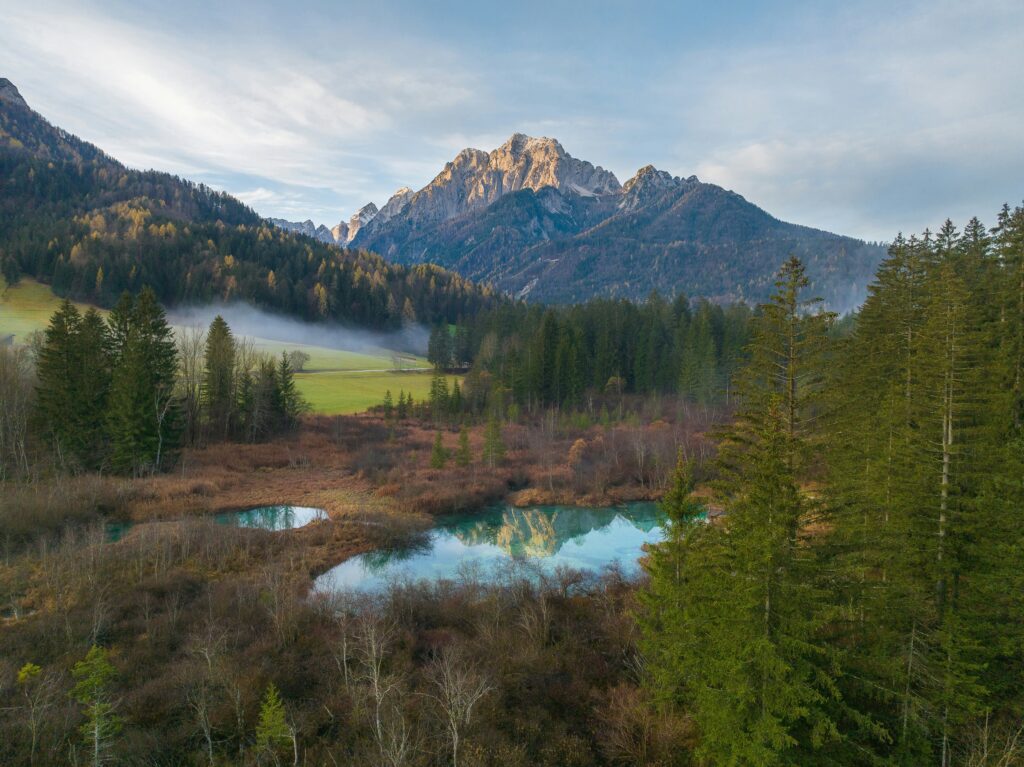
13. Climb the Mala Osojnica
Slovenia shares the Julian Alps with Italy, though not nearly the same level of tourism. Although you won’t be alone climbing the Mala Osojnica, you will appreciate this stunning Lake Bled viewpoint with savvy travelers. This 1.2km out-and-back trail is moderately challenging, requiring an hour of your time for photos you’ll look at for years to come.
Or enjoy the view and drive the highest road in Slovenia
If you’re looking for more dazzling views without lacing up your hiking boots, rent a car and drive the highest road in Slovenia: the Mangart Saddle. Buckle up for this ride into the Julian Alps, a popular starting point for those ascending Mt. Mangart, and gaze over the Italian border.
14. Ride the horses at the Lipica Stud Farm
One of the largest horse farms in the world is located in Lipica, Slovenia. Home to the famous Lipizzaner horses, Lipica Stud Farm has more than 400 years of history across its 300 hectares. The history of the site itself dates back to the mid-14th century when a winery sat on the estate’s grounds. Over a century later, the Stud Farm was founded and filled with six studs and two dozen broodmares. Today, one of Europe’s oldest stud farms continues to breed only Lipizzaner horses.
The Lipica Stud Farm is a family-friendly space where lovers of history and horses can take carriage rides, official training sessions, watch dressage performances, and engage in workshops with the ponies. An on-site four-star hotel, 9-hole golf course, four tennis courts, and restaurant with traditional Karst dishes make the Lipica Stud Farm a great weekend trip from Ljubljana.
15. Seek out tentative UNESCO sites in Slovenia
Slovenia is home to five sites on the UNESCO World Heritage List. Three of these sites are cultural — the works Jože Plečnik in Ljubljana, the prehistoric pile-dwellings around the Alps, and the mercury mining site in Idrija — and two are natural — the Škocjan Caves and the European Beech forests.
New natural, cultural, and historic sites are added to the UNESCO World Heritage List each year, so it comes as no surprise that Slovenia already has a tentative list under consideration. This includes the Fuzina Hills in Bohinj, the Franja Partisan Hospital, the Classical Karst landscape between the Ljubljana Marsh and Bay of Trieste, and the 320km Walk of Peace route that links 15 sites from World War I.
Although some of these sites have been under UNESCO review for decades, they’re no less important to Slovenia’s past. Take an opportunity to go farther off of the typical tourism trail and uncover every fascinating story that Slovenia has to tell.
Discover the best things to do in Slovenia and uncover endless reasons why Ljubljana will be your new favorite European city on our two-week Eastern Capitals & the Dalmatian Riviera journey.
LIKED THIS POST? SHARE WITH YOUR COMMUNITY
